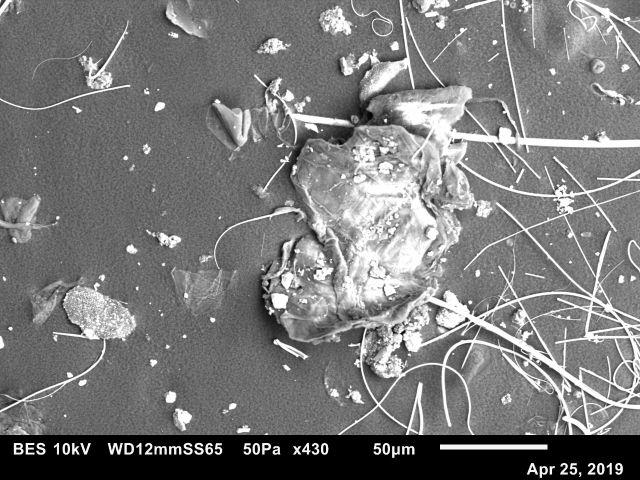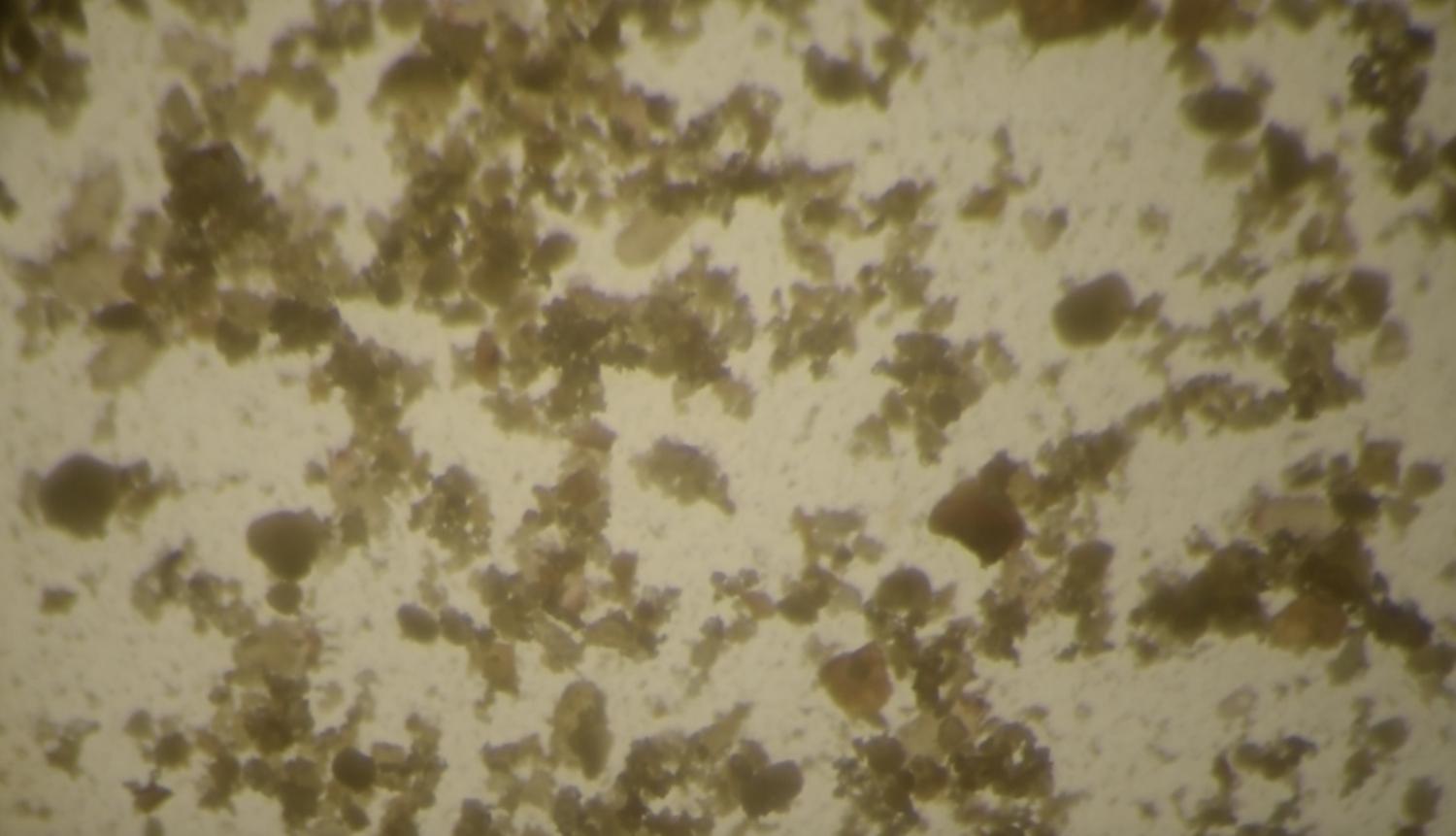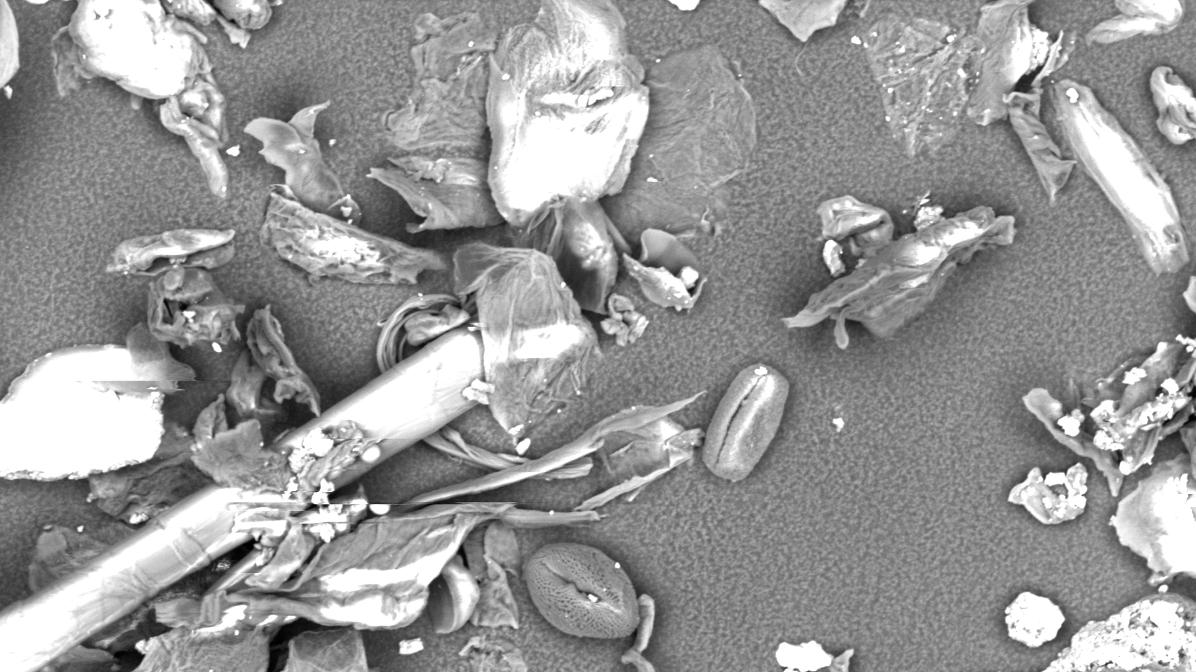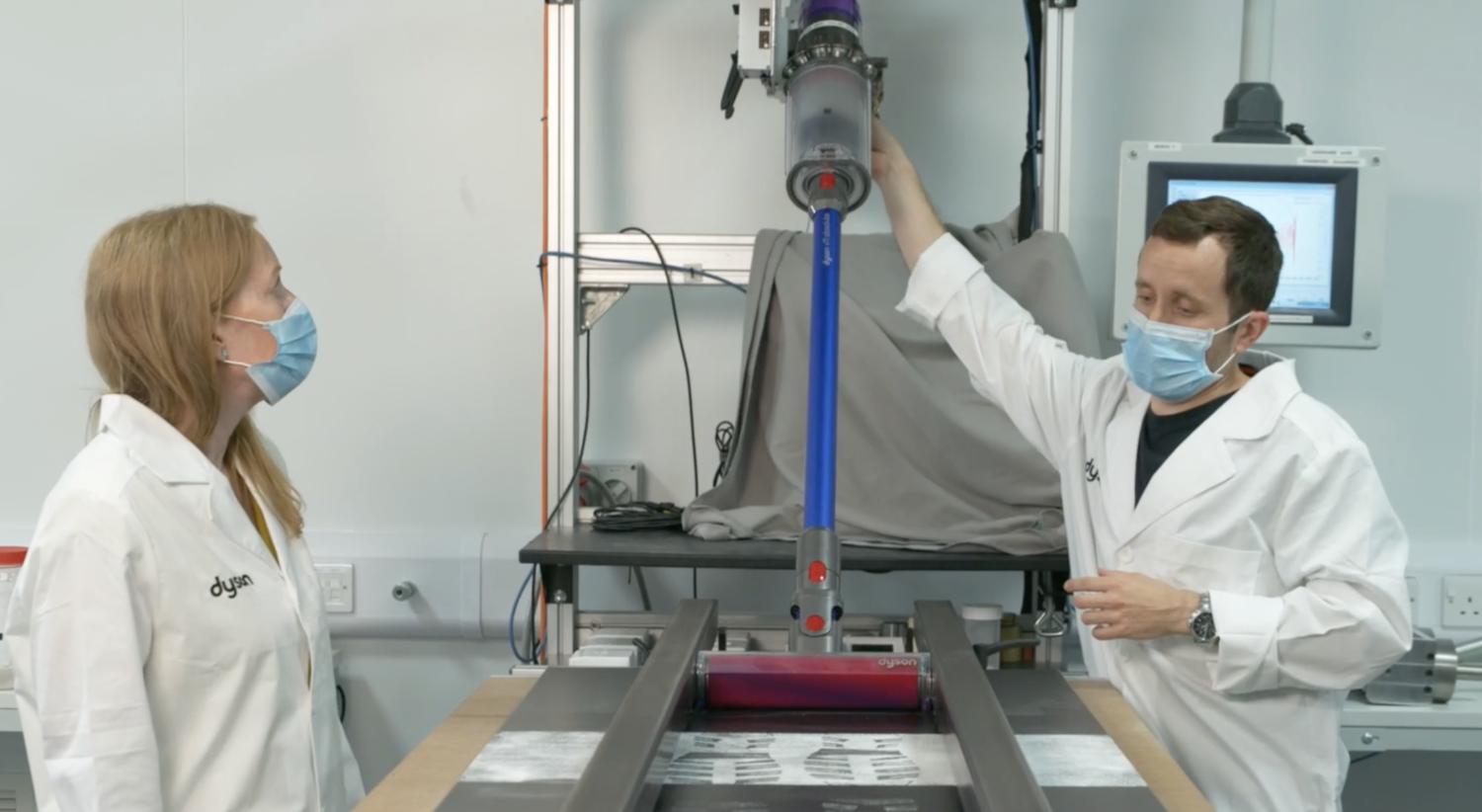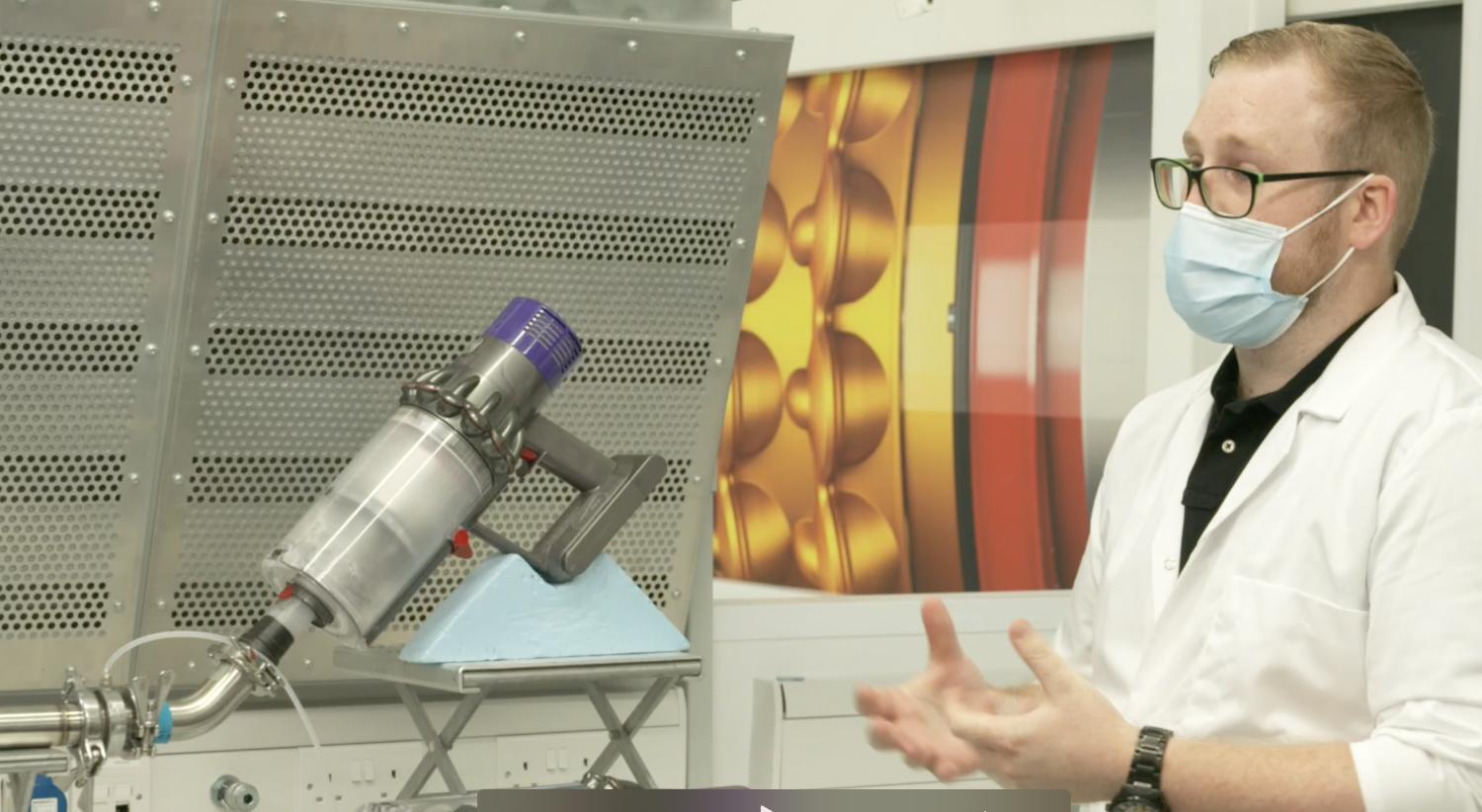Dyson study reveals shift in cleaning habits since Covid-19 – but many are still in the dark about dust
We take a tour behind the scenes of Dyson’s top-secret dust science facilities and talk to in-house experts to find out more. Download and read Dyson’s Global Dust Study report, conducted during 2020, to learn how cleaning habits changed all over the world.
-
At a time when our homes and hygiene have never been so important, it’s unsurprising that six in every ten people worldwide are cleaning more frequently. Since the outbreak of the COVID-19 pandemic, the importance of cleaning has come into sharp focus.
However, understanding exactly why we clean and what is in household dust is not something many of us think about. Dyson’s recent Global Dust Study, which investigated cleaning habits and behaviours while evaluating our understanding of household dust and the impact it can have on our health and wellbeing, revealed that while 76 per cent of us are “extremely worried” about the dust in our homes, very few have a clear understanding of what’s in it.
In response, we asked engineers and dust science experts at Dyson’s Research and Development facilities in Malmesbury, UK, to examine what’s in our household dust and explain why we should care and what we can do about it .
-

-
What's it all about?
Dust is a substance that’s present in every single home in the world, yet how many of us give it a second thought? Look around the room you’re in and it’s likely you’ll be able to see visible dust. If you can’t identify any, it’s because most of the dust in our homes is invisible to the naked eye, which can contain particles that can potentially impact our wellbeing.
Dennis Mathews, Research Scientist in Microbiology at Dyson, is one of the scientists responsible for analysing the hundreds of kilograms of real household dust collected by Dyson each year to better understand what’s in the dust in our homes.
-
“It’s vital that people understand household dust – even the dust they can’t see – and how best to remove it from their homes,” he explains. “If people were more aware of what was in their dust and how it thrives, perhaps they would be empowered to know where to focus their time and attention when cleaning their homes to support their wellbeing.
“When we analyse dust samples in our labs, it’s almost like being a forensic detective,” says Mathews, speaking from Dyson's Household Dust Lab.
-
What is dust?
Household dust is a complex matrix of components that can include dead skin cells, hair, dust mites, dust mite faeces, bacteria, viruses, mould, small insects and other fibres and particles. Many of these particles are only visible under a microscope and can impact our wellbeing.
-

A microscopic rubber particle found in a dust sample that measures roughly the width of a human hair.
-
“We can often tell if someone lives near the sea because we can see certain salts and minerals in their household dust. If there is a certain type of tree in your neighbourhood, we might be able to determine the species based on the type of pollen in your home. In cities, or in homes close to roads, we also tend to find synthetic particles like bits of rubber tyre and microplastics.”
Mathews points to the microscope findings on a screen in the laboratory, revealing a black particle that looks more like a piece of coal than something you would expect to find in your dust. “These rubber particles are so small that they can potentially be inhaled,” he explains.
But microplastics are just the tip of the iceberg.
In addition to the particles from outside our homes, what we find indoors can have a big impact on our household dust.
Our skin is one of the most important ways in which we affect the dust in our homes. An average human sheds around two to three grams of skin per day and even more at night. “That amounts to roughly the weight of a packet of crisps in a week,” says Mathews.
-
What are dust mites?
Dust mites are microscopic arachnids that have lived on earth for millions of years. As humans moved indoors, so too did mites. They can’t cause humans harm, but their faeces contain proteins that trigger allergies and can impact our wellbeing.
-

Skin is one of the main constituents of household dust and forms the diet of house dust mites.
The amount of skin deposited and left lying around a home is important, as this is what house dust mites feed on. There can be millions of dust mites in your indoor environment and while the mites themselves aren’t harmful, the proteins found in their faeces are considered the most important inducers of allergenic diseases worldwide.
It’s thought that anywhere between 65-130 million people around the globe suffer from a dust mite faeces allergy and studies suggest that increased exposure to our homes during the pandemic have exacerbated the symptoms of allergy sufferers. Positive tests for dust mite allergies are also extremely common among people with asthma, types of dermatitis and frequent sinus infections and studies suggest that exposure to high levels of dust mites, especially early in life, increases your risk of developing a mite allergy and asthma too.
While vacuuming frequently is a good way to reduce the amount of dust in your home and minimise the negative impact on our bodies, it’s clear when talking to Mathews that knowing where to vacuum is half the battle.
Dust mites thrive in warm, dark and damp conditions, so places like our beds and sofas can be breeding grounds for mites, who multiply exponentially during dust mite season. Starving mites by vacuuming skin flakes, reducing humidity levels and maintaining a cool temperature in your home are just some ways Dyson microbiologists recommend keeping the number of dust mites in your home to a minimum.
But there is microscopic life in our dust that's even more imperceptible than mites. Bacteria and viruses are present everywhere, including in household dust. One in five respondents of Dyson’s Global Dust Study admitted to being surprised that viruses could be present in the dust in their homes at all.
“Dust really is a microscopic soup of everything we do in our lives,” says Mathews. “And a lot of this isn’t reflected in the synthetic dust that is often analysed and tested for industry standards. At Dyson, we test with real dust, which ensures that our vacuums will perform optimally in the homes of real owners – and not just in a lab.”
-

From daily cleaning to dealing with entrenched dirt and stains, Dyson engineers James McCrea and Dr Calum Robertson share their top tips on how to keep your carpet clean.
-

We spend roughly a third of our lives in our beds, but studies show that hardly any of us regularly prioritise our mattresses as part of our cleaning regimens. Dyson engineers share top tips on how to keep your mattress clean – and tackle the microscopic life lurking beneath the sheets.
-
What can we do about it?
To find out more, we visited the Dyson Pick Up Chamber to weigh up the solutions to household dust.
“When you’ve worked with floor types and dust as long as I have, you don’t look at carpets in the same way,” says Tom McVey, Technical Lead in Dust Pick-up. “Invisible allergens and dust particles can stay hidden deep in the fibres of carpets, particularly in areas where we might be treading in particles from the outside too.”
-
Tom’s role is to understand how best to remove, or pick up household dust from surfaces around the home. In the Pick-Up Chamber, rails of carpets and floor types from homes around the world are tested on to investigate how cleaner heads can be designed to best remove real dust. The team tests miles of carpet each day, to inform and improve vacuum design and performance.
"A good rule of thumb in the home is to vacuum high-traffic areas twice a week and other areas once a week as a minimum, aiming to give carpets and rugs special attention," says McVey.
“But don’t just think of floor spaces as high traffic areas,” he warns, revealing a test rig used to simulate the dust found in a mattress. “Places where we spend the most time but clean the least are likely to be areas of concern. So, make sure you don’t neglect vacuuming sofas, mattresses and pet beds where we shed grams and grams of skin flakes and create environments where dust mites, moulds and bacteria are more likely to thrive.”
All of Dyson’s research into household dust shows that vacuuming is one of the most effective ways of removing it from our homes, with Dyson's Global Dust Study revealing that vacuums are considered the number one tool for removing dust worldwide. Not only do vacuums eliminate the dust you can see, but unlike brooms or mops, they also reduce the amount of invisible dust on surfaces.
What should I look for in a vacuum?
To find out more about removing dust efficiently, we speak to Jonathan McGaughey, Separation Systems Engineer, who's tasked with designing the filtration mechanisms for many of Dyson’s vacuums.
“The filters in a vacuum are so important and yet they are often overlooked,” explains McGaughey. “Once you’ve picked up the dust and dirt from the floor, you want to be sure that it’s all kept within the machine and not expelled back into the air in your room – or worse still, into your face as you vacuum.”
Filtration is the foundation of Dyson vacuum cleaners. James Dyson’s first machine, the DC01, was engineered with a revolutionary cyclonic filtration system that separated dirt, dust and debris from the air flow. Over the last 30 years, Dyson’s filtration mechanisms have become more advanced and robust to ensure that Dyson vacuums can pick up 99.97 per cent of particles as small as 0.3microns – the size of some bacteria and viruses.
-
Designing a vacuum that picks up and filters the invisible allergens properly is a delicate balancing act, explains McGaughey. “And there are a few key things to look out for when choosing a vacuum to remove the dust from your home.”
1. Suction power: Air watts are key to picking up as much of the visible and invisible dust from surfaces. Dyson vacuums are powered with a Hyperdymium™ motor, increasing that suction power efficiently.
2. Filtration: Having multiple layers of filtration to remove microscopic elements of dust alongside robust seals is essential. Even the best filters in the world will be ineffective unless you have seals around those filters to stop air from leaking out of the machine.
-
3. Versatility: The key to keeping on top of dust is to clean frequently – once you can see dust in your home, it’s probably too late and you may already have colonies of dust mites, moulds and bacteria in your home. Choosing a format that’s right for your lifestyle and home environment is important. Consider battery life when looking at a cord-free machine – but remember that the global average time spent vacuuming is only 24.2 minutes per cleaning session according to Dyson’s Global Dust Study, so you may need less battery life than you think.
Understanding what’s in your dust and using the best technology possible to remove it is key to ensuring we maintain a healthy home, especially at a time when hygiene is more important than ever.
It’s the reason why Dyson has spent almost 20 years studying real dust and why our engineers and microbiologists work together to design machines that remove the visible dirt and debris from your home easily, as well as pick up and filter out microscopic particles from household dust – keeping our homes clean and healthy.
Press contacts
-
USA
Emails us at USPR@Dyson.com
1330 West Fulton Street, 5th Floor, Chicago IL, 60607
-
Social media
- Twitter: @dyson
- YouTube: youtube.com/dyson
- Facebook: facebook.com/dyson
- Instagram: @Dyson
- Instagram: @dysonbeauty
- LinkedIn: Dyson
- Pinterest: Dyson Technology



